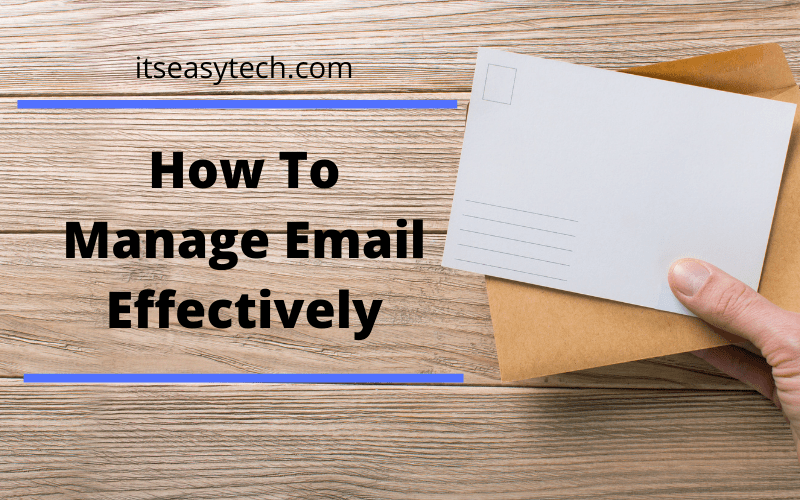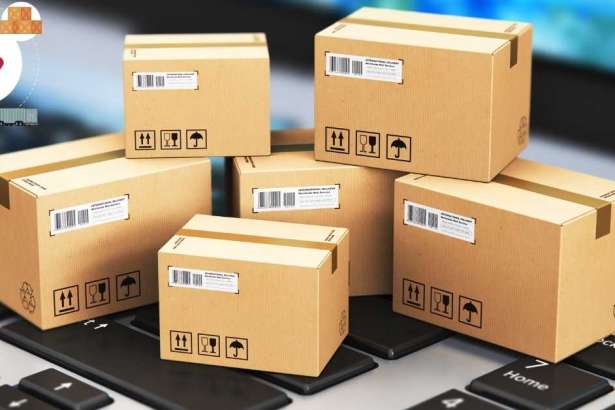I got a question for you: how much time do you spend managing emails? Maybe 30 minutes or an hour or maybe more than that. Well, I spend only 30 minutes a day, and still, it’s useful. For this reason, I will guide you through the procedures to manage emails effectively.
Mails are the communication medium for personal usage to business orientation. It’s a useful service to prioritize and interact from person to person or business to person. Though it’s a productive tool, it can sometimes be an anti-productive tool if not used correctly.
I am referring to the term ‘bad practice’’ as a traditional way. The right way is to manage the emails so that it can be organized and accessed easily. Using it in a precise manner will boost your productivity and save a heck of a time.
Concerning the user’s time and anti-productive habits, we have listed five healthy practices that will drastically boost your Email management activity.
Reading Emails
Previously I asked you a question, ‘how much time do you spend reading your emails’? So are you here with an answer? If not, then I will share my thoughts too. As per my view, it depends on the industry level of your organization or group.
So make a habit of reading Emails at a particular time. In case of personal Emails, don’t check your Emails Each 10 to 15 minutes. Set a specific time so that you can focus the rest of the time, avoiding distraction. The best time to read Emails is before you go to bed. But the time can’t be the same for all. So set a particular period to read the Emails.
Medium scaled groups or organizations can check the Emails in each 1 hour if there isn’t any live support service provided by the organization. In the case of large scale organizations, the best idea is to set a push notification. The employee or worker can read the Emails at the right time, but a large scale organization should read all the Emails so that they don’t miss any.
Responding Emails
Remember, you don’t need to respond to all the Emails. Try to prioritize Emails based on your need. As per my experience, only (40-50)% of the total Emails are useful. Sometimes the Emails are spammy, so directly mark the Email as spam. Irrelevant Emails can be a distraction and keep you away from multitasking.
Practice a win-win situation. If responding to a particular Email will help on both the channels (Reader and Sender). Then, don’t miss out on an Email. For personal scale, there can be an acknowledged Email. So consider replying to the sender with a Thank You note.
Suppose the Email is an information-based Email with specific details. Don’t load yourself by replying to it.
In the case of Businesses try to respond to almost all the Emails. Businesses have a reasonable Emails rate of above 80%.
Create Email Template Replies
I usually reply to my readers with the help of template Mail. I don’t type the same long passages each time. Make a decent reply template Email of different types of responses. It can be a ThankYou mail, feedback, service response, or anything based on your expertise.
Customize the Email as per the received Email with the sender’s name or any detail. Making Email templates can save a lot of time and effort.
Organize your Emails into categories
Organizing your Emails into categories can practically reduce the confusion between multiple readers. In a large group of people, it’s difficult to assign the Emails by manually calling the emails. Ultimately, the person or an organization has to make a folder in Gmail (Commonly known as Labels).
To organize the Mails, you can add or remove the labels in Gmail. Also, you can assign color and sub-labels to any label.
Let’s take an example. A Company named XYZ is a digital marketing agency and has a lot of clients requesting via Email. A single person or more can categorize those Emails based on their type and place them to a particular label (Folder).
[irp]
Unsubscribe from the Emails that you don’t read
Usually, websites ask you for Emails as newsletter subscriptions. It is a good practice, but not every time. Sometimes there can be a load of Emails, which kills your time checking it.
If you are receiving emails frequently from a particular Address then, unsubscribe from the Email. Sometimes the Mails are being loaded with irrelevant and unwanted Emails. If there isn’t an unsubscribe feature, then block the Email Address.
Conclusion
Email is a great communication tool, whether it’s on a personal level or a business level. But the management of Emails is not as you think. So the steps mentioned earlier can help you manage your inbox quickly.
Keep yourself to a limit, and don’t spend too much time reading and responding to irrelevant and unwanted Emails. Organize the Mails in different folders and categorize them on their type. If you are overloaded or don’t want to follow any newsletter, then simply unsubscribe the Email notification from the Address and create Email templates.
In the end, you can reduce your incoming Mails by asking people to Mail only for advocating the real issues rather than general/unwanted Mails. Last but not least, train yourself or your organization to practice effective communication strategies.
Read More: How To Get OneDrive 5TB Storage For Free Lifetime






